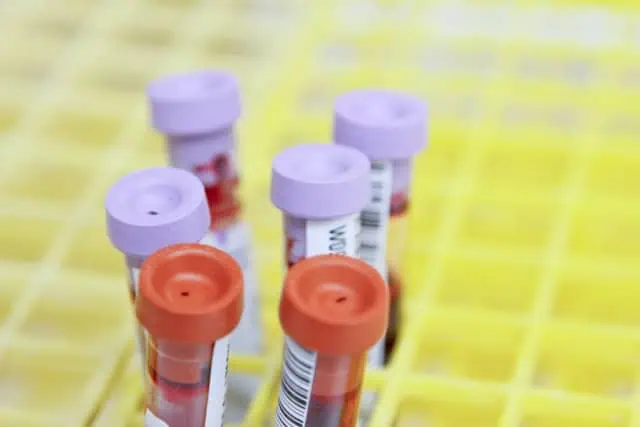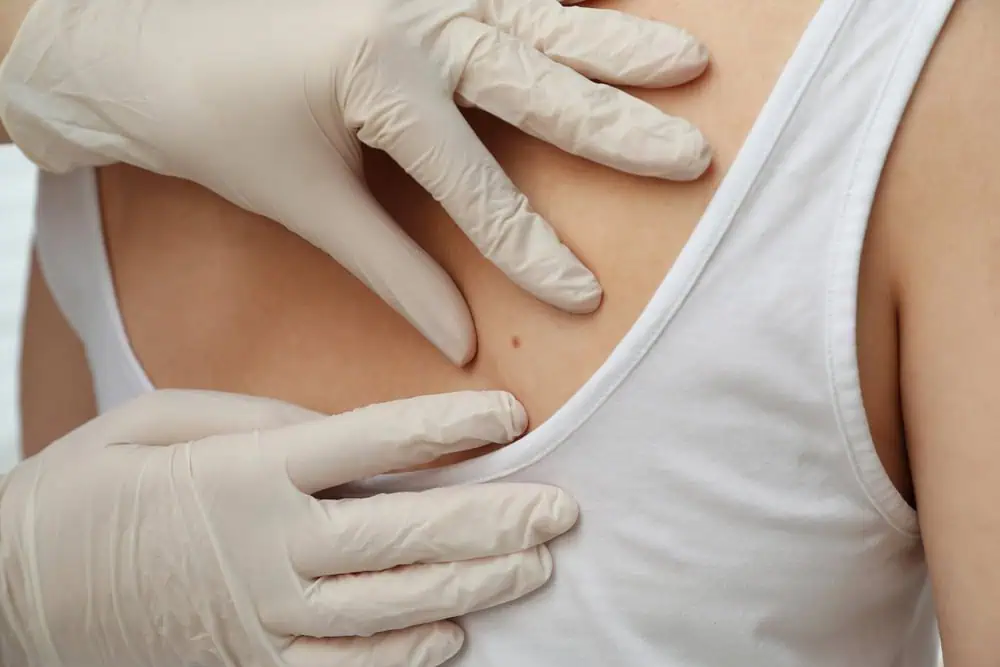Hormone blood tests are diagnostic tools that I use to measure the levels of various hormones in a patient’s bloodstream. These hormones, which include estrogen, testosterone, thyroid hormones, cortisol, and many others, play a pivotal role in the regulation of essential body functions. The balance of these hormones is crucial for maintaining health, and any imbalance can lead to a variety of health problems.
When patients come to me displaying symptoms of hormonal imbalance, such as fatigue, weight changes, or mood swings, a hormone blood test can be instrumental in defining the underlying cause. The information gathered from these tests can help me to diagnose conditions like polycystic ovary syndrome (PCOS), menopause, thyroid disorders, and adrenal insufficiencies, among others. Understanding the levels of hormones present in the body is essential in developing an effective treatment plan to address the patient’s specific health concerns.

Key Takeaways
- Hormone blood tests are crucial for identifying hormonal imbalances that may be affecting a patient’s health.
- These tests help in diagnosing various conditions such as PCOS, thyroid disorders, or menopause.
- Interpreting test results is key to developing a personalized treatment plan.
Understanding Hormones and Their Importance
In my examination of hormone blood tests, I find it imperative to grasp the essential roles of hormones and their critical function in maintaining health.
Roles of Key Hormones
Thyroid: My thyroid gland releases hormones crucial for metabolism regulation. A prime hormone is thyroxine, which influences my energy levels, heat production, and overall metabolic rate.
Estrogen and Testosterone: As female and male sex hormones respectively, estrogen and testosterone orchestrate sexual development and reproductive functions. Estrogen, produced by my ovaries, affects menstrual cycles and pregnancy, while testosterone, produced primarily by my testicles, is synonymous with muscle mass and libido.
Adrenal Hormones: My adrenal glands synthesize essential hormones like cortisol, which manages stress and metabolism, and adrenaline, commonly known for the ‘fight or flight’ response.
Pituitary Hormones: Often termed the ‘master gland,’ my pituitary gland governs other hormone-releasing glands and secretes growth hormone, influencing my growth and repair processes.
Endocrine System Overview
The endocrine system is a network I often describe as the body’s chemical messaging system. It includes the hypothalamus, pituitary, thyroid, parathyroids, adrenals, pineal body, reproductive glands (which include the ovaries and testicles), and pancreas. This system is paramount for coordinating everything from growth and development to how my body metabolizes food and responds to stress.
Hormone Interactions and Balance
My hormones interact in a delicate balance, influenced by feedback mechanisms predominantly between my hypothalamus, pituitary, and target glands. If, for instance, my thyroid hormones dip, my hypothalamus releases TRH, triggering my pituitary to release TSH and stimulate my thyroid. Disruptions in this balance can lead to health issues, reflecting the necessity of hormonal equilibrium for my well-being.
Indications for Hormone Blood Tests
When considering hormone blood tests, I look at various factors that signal the need for such testing. These factors range from common symptoms and specific health conditions to routine assessments and targeted diagnostic efforts.
Common Symptoms and Conditions
I often see hormone blood tests ordered when patients present with menstrual irregularities such as missed periods or heavy bleeding, which could indicate conditions like polycystic ovary syndrome (PCOS) or menopause. Other symptoms prompting these tests include persistent fatigue, changes in weight, and mood swings, which might suggest thyroid issues, including hypothyroidism or hyperthyroidism. Additionally, signs correlating with hormone imbalances during puberty or labor warrant evaluation.
- Menstrual Cycle: Testing for hormone levels helps determine causes behind irregular cycles.
- PCOS: Assessing hormones such as estrogen and testosterone can confirm or rule out PCOS.
- Menopause: Hormone tests measure levels to manage symptoms related to menopausal transition.
Routine Health Screenings
Routine health screenings can include hormone tests even in the absence of symptoms, particularly for those at risk of conditions such as diabetes or osteoporosis. For instance, women of a certain age or with a familial predisposition to hormonal issues may undergo testing as a precaution.
- Diabetes: Regular screening for insulin and blood glucose levels are crucial for diabetes management.
Targeted Diagnostic Testing
When I suspect specific hormonal disorders based on a patient’s signs and clinical history, I advise targeted diagnostic testing. This includes cases of infertility, the presence of tumors which may secrete hormones, or when there’s an indication of an eating disorder affecting hormone levels.
- Infertility: Evaluating hormones like FSH and LH can provide insights into infertility issues.
- Tumors: Detecting abnormally high or low hormone levels may aid in identifying hormone-secreting tumors.
- Eating Disorder: Hormonal imbalances may result from eating disorders, affecting bodily functions.
I make use of these tests to help establish diagnoses and to guide treatment decisions, ensuring my approach to patient care is comprehensive and tailored to their individual health needs.

Types of Hormone Blood Tests
In my exploration of hormone blood tests, I focus on the specific panels used to evaluate various glands and their hormone outputs. These tests are critical in diagnosing and managing hormonal imbalances and conditions.
Thyroid Function Panels
Thyroid Function Panels assess the performance of the thyroid gland. I understand that these typically measure Thyroid-Stimulating Hormone (TSH) and thyroid hormones like thyroxine (T4) and triiodothyronine (T3). Abnormal levels may indicate hypothyroidism or hyperthyroidism, guiding treatment accordingly.
- TSH: Vital for diagnosing thyroid disorders
- Thyroxine (T4): Main hormone produced by the thyroid gland
- Triiodothyronine (T3): Active form of thyroid hormone influencing metabolism
Reproductive Hormone Panels
My review of Reproductive Hormone Panels reveals that they measure hormones significant to reproductive health. For women, these include Estradiol, Progesterone, Follicle-Stimulating Hormone (FSH), and Luteinizing Hormone (LH). In men, tests often measure testosterone, a key androgen, amongst others.
- FSH: Crucial for both genders in regulating reproductive processes
- LH: Works in tandem with FSH to control sexual function
- Estradiol: A form of estrogen influencing female reproductive health
Adrenal Function Panels
Adrenal Function Panels focus on hormones related to stress and metabolism produced by the adrenal glands. These tests often include cortisol and DHEA (dehydroepiandrosterone) levels. Elevated or decreased levels of these hormones can indicate various health issues, from fatigue to adrenal dysfunctions.
- Cortisol: A hormone that manages how my body responds to stress
- DHEA: A precursor to sex hormones including estrogens and androgens
Pituitary Function Panels
Lastly, Pituitary Function Panels are essential as the pituitary gland is the “master” gland influencing other hormonal glands. Tests routinely check levels of hormones such as FSH and LH, which are also secreted by the pituitary gland.
- FSH: Its levels can indicate pituitary function or dysfunctions
- LH: Also reflective of pituitary health
Through these panels, I glean comprehensive insights into an individual’s hormonal landscape, aiding in the diagnosis and management of various conditions.

Preparing for a Hormone Blood Test
In my experience, preparing for a hormone blood test involves following specific pre-test instructions and understanding various factors that could affect hormone levels. Proper preparation ensures the most accurate results.
Pre-test Instructions
Before getting a hormone blood test, I adhere to certain pre-test guidelines:
- Medications: It’s crucial for me to review my current medications with my healthcare provider, as some can influence hormone levels. For example, birth control pills can alter estrogen and progesterone levels.
- Supplements: I also examine my supplement intake since certain vitamins and herbal supplements might impact hormone concentrations.
- Fasting: If instructed by my doctor, I fast—typically avoiding food and beverages except for water—for a specified period before the test.
- Appointment Timing: Since hormone levels can fluctuate, the timing of the test is planned accordingly. For women, this could mean scheduling the test at a certain point in their menstrual cycle.
Understanding Factors That Affect Hormone Levels
Several personal factors may influence hormone levels, and I keep these in mind as I prepare:
- Stress: High stress levels can skew results, particularly for cortisol, so I aim to keep stress minimal prior to testing.
- Eating Habits: Having an eating disorder can significantly affect hormone balances, hence maintaining a regular, balanced diet before the test is important.
By focusing on these elements, I set the stage for the most accurate and reliable hormone blood test results.
The Blood Test Procedure
In my experience, obtaining a blood sample for hormone testing follows a specific and careful procedure to ensure accuracy and safety.
Blood Sample Collection
I’ll start with the blood sample collection, where my skin is typically cleansed with an antiseptic to prevent infection. A healthcare professional will then draw blood, usually from a vein in my arm. It is imperative to find a suitable vein that can provide an adequate blood sample for the necessary tests.
Safety and Hygiene
Safety and hygiene are paramount to prevent contamination or infection. I’ve noticed that gloves are always worn by phlebotomists, and any equipment used, such as needles and vials, is sterile and disposable. After the blood draw, the puncture site is cleaned and bandaged to promote healing.
What to Expect During Testing
When undergoing testing, I’m often asked to sit or lie down to prevent dizziness. A tight band called a tourniquet is placed above the blood draw site to make the veins more visible. Although the needle insertion may cause a brief pinching sensation, it’s quick. I understand that remaining calm and following any pre-test instructions provided by the healthcare staff ensures the procedure goes smoothly.

Interpreting Test Results
When analyzing hormone blood test results, it’s crucial to understand the context provided by reference ranges and the implications of results falling outside these ranges. I’ll guide you through understanding these results, considering both normal and abnormal levels, and the subsequent steps in the diagnostic process.
Reference Ranges and Units
Each hormone has a reference range, which indicates typical levels found in healthy individuals. These ranges can vary based on age, gender, and even the laboratory’s testing methods. Hormone levels are measured in specific units, such as picograms per milliliter (pg/mL) or nanograms per deciliter (ng/dL). For example, the standard reference range for the hormone estradiol (E2) in premenopausal women might be approximately 30-400 pg/mL, whereas in postmenopausal women, it’s generally much lower, reflecting physiological changes.
Understanding Results Beyond Normal Ranges
When my test results show hormone levels outside the normal ranges, it can indicate several conditions or states. Abnormal levels of hormones require careful interpretation. High or low readings might signal an endocrine disorder, such as hypothyroidism with decreased thyroid hormones or polycystic ovary syndrome (PCOS) with elevated androgens. It’s important not to jump to conclusions; not all deviations mean pathology. Factors like stress, medication, or even the time of day can influence hormone levels.
Further Diagnostic Steps
If abnormal levels are detected, I follow up with additional tests or assessments to confirm a diagnosis. A single test often isn’t sufficient for a definitive diagnosis. For instance, if I suspect a thyroid issue based on initial tests, I might order an ultrasound of the thyroid gland or a fine needle aspiration biopsy if a nodule is present. I outline a tailored diagnostic protocol depending on the specific hormone abnormalities and the patient’s clinical presentation.
Frequently Asked Questions
In this section, I’ll cover essential aspects of hormone blood tests for women, focusing on interpreting results, hormones tested, optimal testing times, the utility of these tests in diagnosis, signs of imbalance, and reference ranges.
How can you interpret female hormone blood test results?
When reviewing hormone blood test results, I look for levels that fall within established normal ranges. Results outside of these ranges may indicate hormonal imbalances or health issues. Each hormone’s function and interaction with other hormones must be taken into consideration for accurate interpretation.
What specific hormones are included in a comprehensive hormone blood test?
A comprehensive hormone blood test often includes estradiol, progesterone, follicle-stimulating hormone (FSH), luteinizing hormone (LH), thyroid hormones, and sometimes testosterone. Testing may vary based on individual health concerns and stages in the menstrual cycle.
What is the optimal timing for testing hormone levels to identify imbalances?
Timing for testing hormone levels is crucial; for menstrual-related hormones such as FSH and LH, it is best done on the 3rd day of the menstrual cycle, while other hormones might be tested at different times. Following specific timing helps in precisely identifying imbalances related to various menstrual or life stages.
How can a blood test be helpful in detecting hormone-related issues?
Blood tests quantify hormone levels, providing me with objective data about potential hormonal imbalances. From menopause symptoms to thyroid dysfunction, these measures can be vital in diagnosing and treating various conditions.
What signs indicate a possible hormone imbalance in females?
Signs of hormone imbalance may include irregular menstrual cycles, unexplained weight changes, fatigue, skin issues, and mood swings. These symptoms urge a closer look into a person’s hormonal landscape through testing.
What are the standard reference ranges for hormone levels in a female hormone blood test?
Reference ranges for female hormones vary by the individual’s age, menstrual cycle phase, and health status. Laboratories provide these ranges alongside test results, which help in determining if hormone levels are within expected limits.










